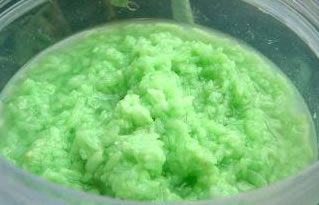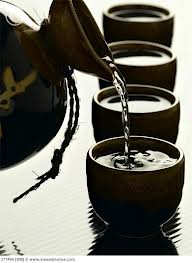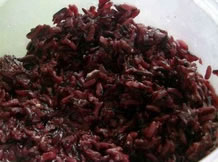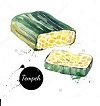Pure Koji Starter - Aspergillus Oryzae) 10 Grams.
Koji Starter (Aspergillus oryzae) is needed to produce Koji Kin, the basic product needed. After produced the Koji Kin, see below this basic starter is needed to make misa, soy sauce, shoyu, shio koji, amazake, black beans sauce, doungjun, and sake.
Although koji, has been a culinary mainstay in Asia for centuries, it's only recently that Western chefs have started catching on to its transformative powers as a seasoning and a curing agent.
What does miso, soy sauce,shoyu,shio koji, amazake, black bean sauce, doungjun, and sake have in common? Other than hailing from Japan — or in the case of soy sauce, being very popular in Japan — they’re all made possible by a microbe called koji.
The mold is what gives miso, and others, that signature umami punch. It was domesticated about 9,000 years ago and used to ferment some of our favorite foods. Much like mushrooms koji thrives off specific environments, specifically a pile of steaming cooked rice. In sake-making, the microbe is allowed to take over and produce that familiar smell. The Japanese are so obsessed with this mold that koji is the country’s national fungi and is celebrated annually on National Fungus Day, October 12.
It's not eaten on its own, but grown on partially or fully cooked grains, such as rice and barley. As the spores begin to flourish, enzymes convert the grain into sugar, and then the enzyme-rich grain is added to a second product, such as soybeans. This secondary fermentation process causes a complete transformation in flavor and texture. It's how soybeans become miso, rice becomes sake, soybeans plus wheat become soy sauce. This resulting flavor you know and love? Umami.
In its natural state, koji smells floral, yeasty and citrusy, and it was this intoxicating bouquet that inspired many Chefs, to experiment with the mold. When they were researching house-made chickpea miso, they found that koji's sweet scent reminded them of a fresh scallop. After discovering they could grow koji not just on rice but also on rice flour, the chefs coated scallops in rice flour, spread the spores directly onto the flour and left them in a dehydrator. Thirty-six hours later, out came fungus-coated scallops that were neither spoiled nor rank, but instead perfectly cured with firm flesh that smelled of sweet citrus and brine.
Meanwhile, down in Charleston, South Carolina, a Chef uses koji in almost every menu item as a way to "boost flavor." Adding koji Southern dishes helps him unlock the hidden depth of flavor in indigenous ingredients. As he puts it, "If we can inoculate Sea Island red peas and make red pea koji when we make a simple dish of hoppin' John, it tastes extraordinary. With the growing interest in fermentation across kitchens of all stripes, its predicted that in the next two to three years, chefs will be using koji in as many products as they can. "It's just a home run once people start using koji," he says. "Once you destroy the fear of the unknown, these processes become extremely simple and applicable across a wide variety of cuisines."
Did you know the secret ingredient for making soft and hard cheeses?
Adding our Koji Starter (Aspergillus oryzae), see the Cheese Starter Section, and the impact of our koji Kin Starter on hard and soft Cheese
Content:
• 10 gram pure Koji Starter
• Enough for 8 to 10 kg kg rice/grains/soy beans.
• Ingredient: Aspergillus Oryzae spores (koji)
• Keep in the refrigerator for 6 maanden for longer ( years ) in freezer.br>
• Country: Japan







